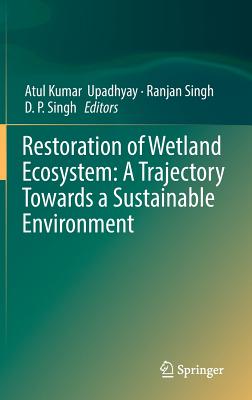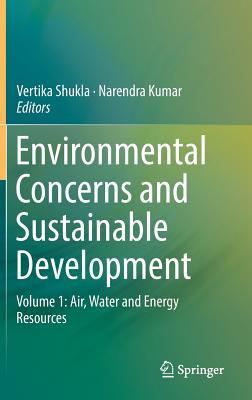Engineering Tools for Environmental Risk Management: 4. Risk Reduction Technologies and Case Studies
Gruiz, Katalin, Meggyes, Tamás, Fenyvesi, Éva
- 出版商: CRC
- 出版日期: 2020-12-18
- 售價: $2,440
- 貴賓價: 9.5 折 $2,318
- 語言: 英文
- 頁數: 582
- 裝訂: Quality Paper - also called trade paper
- ISBN: 0367731932
- ISBN-13: 9780367731939
海外代購書籍(需單獨結帳)
相關主題
商品描述
The four volumes of the book series "Engineering Tools for Environmental Risk Management" deal with environmental management, assessment & monitoring tools, environmental toxicology and risk reduction technologies. This last volume focuses on engineering solutions usually needed for industrial contaminated sites, where nature's self-remediation is inefficient or too slow. The success of remediation depends on the selection of an increasing number of conventional and innovative methods. This volume classifies the remedial technologies and describes the reactor approach to understand and manage in situ technologies similarly to reactor-based technologies. Technology types include physicochemical, biological or ecological solutions, where near-natural, sustainable remediation has priority.
A special chapter is devoted to natural attenuation, where natural changes can help achieve clean-up objectives. Natural attenuation and biological and ecological remediation establish a serial range of technologies from monitoring only to fully controlled interventions, using ' just' the natural ecosystem or sophisticated artificial living systems. Passive artificial ecosystems and biodegradation-based remediation - in addition to natural attenuation - demonstrate the use of these 'green' technologies and how engineering intervention should be kept at a minimum to limit damage to the environment and create a harmonious ecosystem.
Remediation of sites contaminated with organic substances is analyzed in detail including biological and physicochemical methods.
Comprehensive management of pollution by inorganic contaminants from the mining industry, leaching and bioleaching and acid mine drainage is studied in general and specifically in the case of an abandoned mine in Hungary where the innovative technology of combined chemical and phytostabilization has been applied.
The series of technologies is completed by electrochemical remediation and nanotechnologies.
Monitoring, verification and sustainability analysis of remediation provide a comprehensive overview of the management aspect of environmental risk reduction by remediation.
This book series focuses on the state of knowledge about the environment and its conscious and structured application in environmental engineering, management and decision making.
作者簡介
Katalin Gruiz is Associate Professor at Budapest University of Technology, Budapest, Hungary.
She graduated in chemical engineering at Budapest University of Technology and Economics in 1975, received her doctorate in bioengineering and her Ph.D. in environmental engineering. Her main fields of activities are: teaching, consulting, research and development of engineering tools for risk-based environmental management, development and use of innovative technologies such as special environmental toxicity assays, integrated monitoring methods, biological and ecological remediation technologies for soil and water, both for regulatory and engineering purposes. Prof. Gruiz has published 70 scientific papers, 25 book chapters, 43 conference papers, and edited 9 books and a special journal edition. She has coordinated a number of Hungarian research projects and participated in European ones. Gruiz is a member of the REACH Risk Assessment Committee of the European Chemicals Agency. She is a full time associate professor at Budapest University of Technology and Economics and heads the research group of Environmental Microbiology and Biotechnology.
Tamás Meggyes is Research Coordinator in Berlin, Germany.
He is specialising in research and book projects in environmental engineering. His work focuses on fluid mechanics, hydraulic transport of solids, jet devices, landfill engineering, groundwater remediation, tailings facilities and risk-based environmental management. He has contributed to and organised several international conferences and national and European integrated research projects in Hungary, Germany, United Kingdom and USA. Tamás Meggyes was Europe editor of the Land Contamination and Reclamation journal in the UK and a reviewer of several environmental journals. He was invited by the EU as an expert evaluator to assess research applications and by Samarco Mining Company, Brazil, as a tailings management expert. In 2007, he was named Visiting Professor of Built Environment Sustainability at the University of Wolverhampton, UK. He has published 130 papers including 14 books and holds a doctor's title in fluid mechanics and a Ph.D. degree in landfill engineering from Miskolc University, Hungary.
Éva Fenyvesi is senior scientist and founding member of CycloLab Cyclodextrin Research and Development Ltd, Budapest, Hungary.
She graduated as a chemist and received her Ph.D. in chemical technology at Eötvös University of Natural Sciences, Budapest. She is experienced in the preparation and application of cyclodextrin polymers, in environmental application of cyclodextrins and in gas chromatography. She participated in several national and international research projects, in the development of various environmental technologies applying cyclodextrins. She is author or co-author of over 70 scientific papers, 10 chapters in monographs, over 50 conference presentations and 14 patents. She is an editor of the Cyclodextrin News, the monthly periodical on cyclodextrins.











